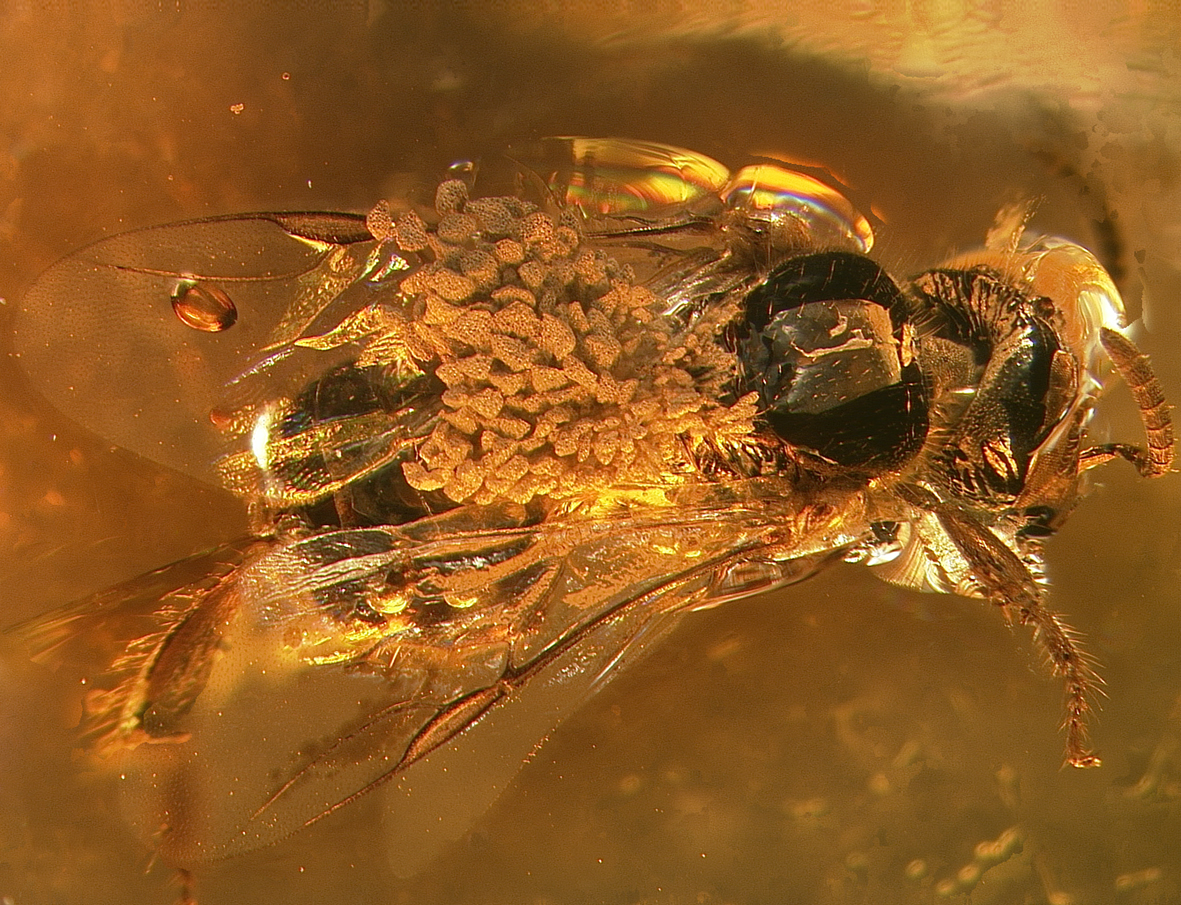Orchids have a special place in plant biologists’ hearts. How can they not? They are the beetles (*) of the plant world. One in every five flowering plant species living today is an orchid. Although orchids are so diverse, they are also rather rare. Most people think of orchids as showy, vibrant and beautiful, but Gastrodia agnicellus, named in 2020 from a forest in Madagascar, is quite the opposite.
The evolutionary alliance of orchids and their pollinators go as far back as at least 22 million years ago based on amber preserved fossils of insects carrying their pollen aggregates known as pollinium. The following fossil from Harvard Natural History Museum collections is an undisputable evidence for pollination with orchid bees. You can see pollinia deposited very clearly on the thorax. The rich natural history between orchids and their specialized pollinators was covered by Charles Darwin in his fantastic book “The Various Contrivances by which Orchids are Fertilized by Insects” published in 1877. Even crickets who are actually herbivores can fullfill pollinator role in orchid flowers.
Here in this documentary we see a dedicated team of scientists determined to capture the interaction of a rare orchid with its nocturnal pollinator a hawkmoth in a rather difficult to document habitat. How do you film a visitor to a plant if it produces so many flowers in one go? Moths are masters of disguise. Spotting an individual resting on a tree trunk is indeed quite difficult. You can encounter orchids in quite unassuming places like the cranefly orchid from Georgia.
The spur structure described in this documentary has evolved under exact same selective pressures such as that of the famous Darwin’s orchid endemic to Madagascar. Darwin predicted in his 1862 publication that the extremely long spur must have evolved to attract an insect with an extremely long tongue (proboscis). The maturation sequence of the blossoms start from the bottom of the inflorescence. This guarantees cross-pollination. Darwin’s orchid is pollinated by noctuid moths and particularly by the true army worm moth (Pseudaletia unipuncta).
During their recording campaign researchers discover some unexpected interactions that surprised all of us who are fascinated by myriad forms of plant-animal interactions. What did they find up 50 ft on top of a massive cypress tree? No spoilers…
(*) A popular quote among life scientists is that of the British evolutionary biologist and geneticist J.B.S. Haldane. Haldane reasoned quite humorously that if a god or divine being had created all living organisms on Earth, then that creator must have an “inordinate fondness for beetles.”



0 Comments
You can be the first one to leave a comment.